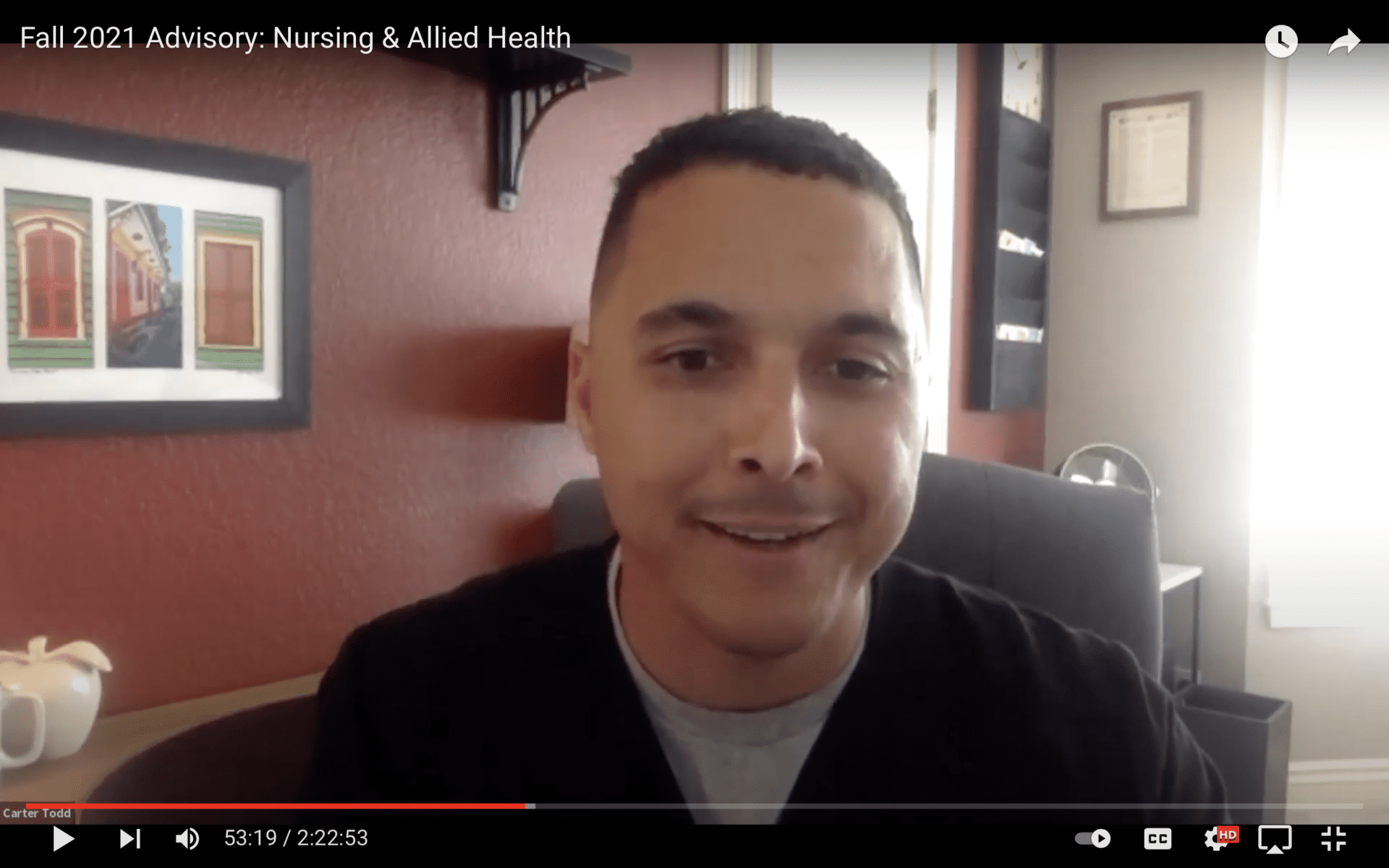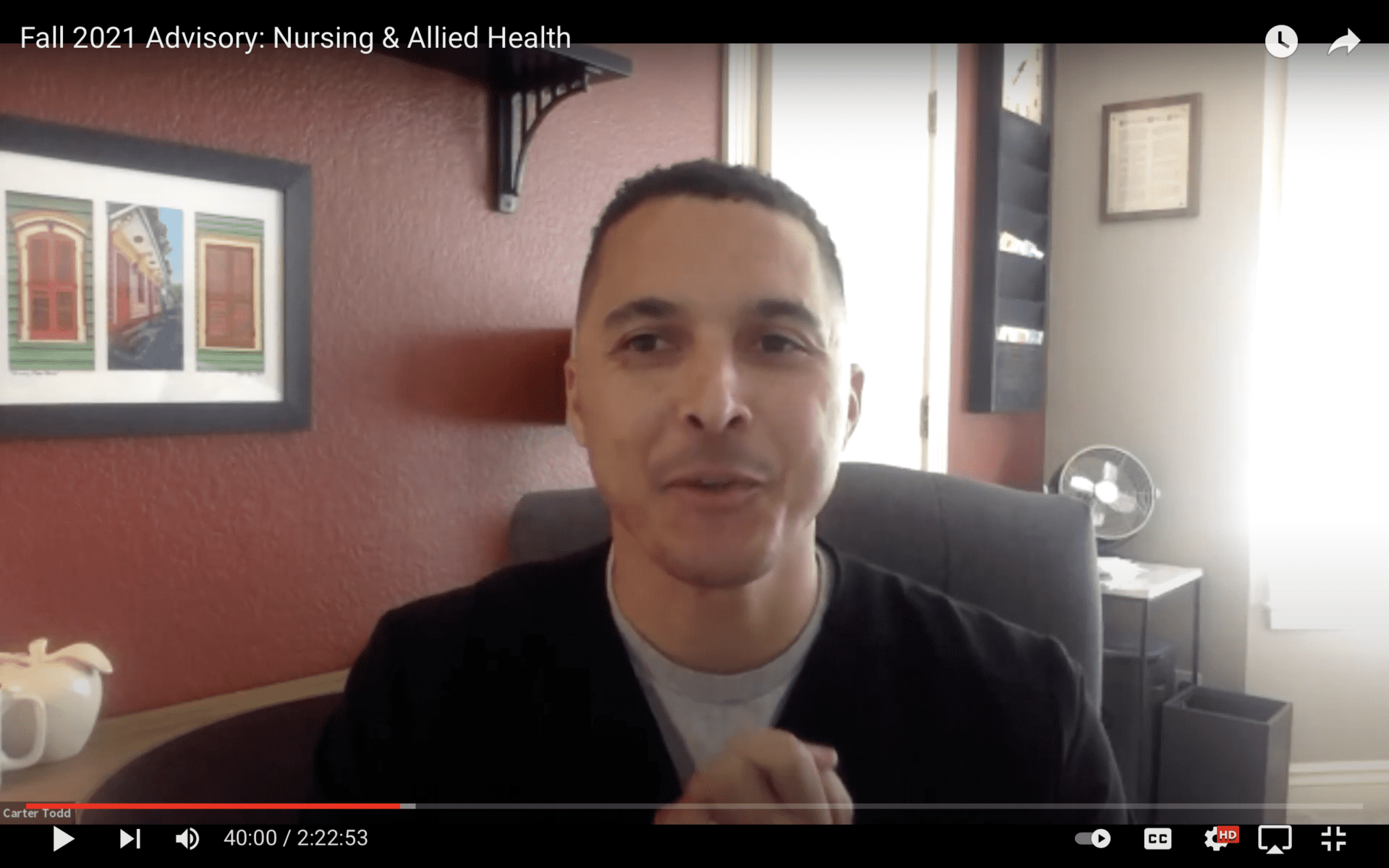Regional Health Care Partners Cast an Eye Toward Equity
 As nationwide demand escalates for medical professionals in the wake of the pandemic, the call for diversity in the workforce is getting louder.
As nationwide demand escalates for medical professionals in the wake of the pandemic, the call for diversity in the workforce is getting louder.
The equity gap is especially broad in California, where, for example, Latinos make up nearly 40 percent of the population yet represent only seven percent of physicians. For an industry that depends so heavily on community relationships and trust, statistics like these diagnose an emergency.
“Research shows that… patients and the community receive better quality care from a diverse and well-represented workforce,” says Carter Todd, Assistant Nurse Manager at Kaiser Permanente and Founder and President of the Capitol City Black Nurses Association.
Todd was the keynote speaker for October’s North Far North Regional Consortium advisory meeting on health care. The goal was to diversify the classroom-to-career pipeline, filling critical demand while creating a workforce that better serves the region.
The veteran nurse says that while Northern California is one of the most diverse areas in the country, there remains much to be improved from a nursing personnel standpoint: “We need to be proactive in making sure our workforce represents the communities that we care for.”
Todd spoke about his own journey from community college through grad school, giving educators and industry partners in attendance an inside perspective.
“Statistically, I wasn’t a great nursing school candidate — my GPA wasn’t through the roof, and I had to work to put myself through college,” Todd recalls. He went on to share the challenges of being a young, Black man entering a predominantly white and female profession, reminding educators to consider applicants holistically. “If they had just looked at me on paper,” Todd reflects, “I probably wouldn’t have made it.”
As a community college success story, Todd was especially motivated to address the advisory meeting. For the nurse manager, higher education will always be the best equalizer in developing a more diverse industry.
“I think it’s really important that we bridge the gap between education and the workforce and… keep everyone heading in the same direction,” he says. “That’s how we create sustainability.”
It’s also a priority for Regional Director of Health Julie Holt, who has spent the past five years helping diversify the talent pipeline as part of her mission. And while there’s no shortage of motivation on the part of colleges, it’s the tangible success of stories like Todd’s that really drives the urgency home.
“Carter set the tone and really brought people together,” Holt recalls about the keynote speaker, who also manages a COVID-19 unit and told participants that he would return to work right after the meeting. For Holt and her colleagues, that reality hit home: “That really grounded us in, ‘Okay, that is the real reason we’re here.”
The Strong Workforce-supported advisory meeting brought educators and industry partners together to share diversity data and collaborate on solutions. The discussion touched on the successes and failures of the current pipeline, as well as specific barriers to student persistence.
“There is a significant attrition rate for Hispanic and African American students in the prerequisite sciences,” says Holt, who notes a 50 percent decline in completers between the first chemistry and last biology courses. According to the director, a culturally responsive curriculum is essential to support diverse students, and she says that continued collaboration can turn the tides.
 “Partnering with industry to provide mentoring and a very connected support system in the prerequisites as well as the health programs is crucial for students to succeed,” says the director. For example, UC Davis Health Office of Diversity, Equity and Inclusion already works closely with Sacramento City College’s nursing program, giving diverse students a leg up. This kind of powerful synergy is hoped to expand in the coming year.
“Partnering with industry to provide mentoring and a very connected support system in the prerequisites as well as the health programs is crucial for students to succeed,” says the director. For example, UC Davis Health Office of Diversity, Equity and Inclusion already works closely with Sacramento City College’s nursing program, giving diverse students a leg up. This kind of powerful synergy is hoped to expand in the coming year.
For Holt, advisory meetings are just the first step in facilitating this collaboration and helping students make the jump from program to paycheck.
Employers, for their part, tend to agree.
“Our community college students are leaving their programs well-equipped to be successful,” says Lyndon Huling, Manager of Leadership Recruitment & Diversity Services at UC Davis Health. “We just need to make sure they can navigate our process and that we do everything we can to demystify the application.”
UC Davis Health’s work with community colleges entails tapping into the region’s local, diverse talent pool — critical for an organization that Huling calls “incredibly diverse.” As the industry partner says, “We are looking for professionals that can step into that space and demonstrate cultural competency… That is really healthcare in the 21st century.”
At the event, Huling made a critical connection with the City of Sacramento to support UC Davis Health’s “Aggie Square” tech and innovation hub. The Center’s continuing and professional education team will be working to identify programs, training, and strategies to help traditionally underserved community members apply for careers. It’s a new link that may never have happened without the advisory meeting.
“It’s fantastic to be invited to spaces like that and to be a partner,” Huling reflects. “The piece that really matters is that genuine relationship with the community college system to create those pathways to health care careers.”
Those pathways are constantly evolving as workforce needs shift and new technologies emerge. Meanwhile, community colleges, with their ability to quickly innovate solutions, find themselves on the front lines. One example is Yuba College’s program for psychiatric technicians, which has proven to be a game-changer in filling one of the sector’s most in-demand positions.
“They are trying to meet the mental health needs of the community,” says Holt.
Meanwhile, demand persists for well-established roles like registered nurses, licensed vocational nurses, certified nursing assistants and medical assistants.
“The health care sector represents 9.1 percent of the total jobs in the regional economy,” says Aaron Wilcher, Director of the Centers of Excellence in the Los Rios Community College District. Despite the pandemic, he explains that the sector has a strong 13 percent growth rate. “Health care is weathering the recession pretty well.”
The director says that job postings are 50 to 70 percent higher on a month-over-month basis compared to January 2019, even spiking to 100 percent in summer 2021. “This is just another indication that health care with respect to demand is strong,” says Wilcher. “There’s lots of demand, lots of opportunity, and lots of need to grow programs.”
From a diversity standpoint, though, there’s still work to do. Currently, half of all health care workers in the region identify as white, while about one-fifth identify as Asian. The disparity in numbers for Black and Latino professionals in the industry represents a challenge for the North Far North region, but also an opportunity. With demand rising, employers are going the extra mile to recruit employees from diverse backgrounds to staff positions while setting a foundation for equity and economic mobility.
“We tried to help design the meeting in a way that brings equity to the forefront,” says Renee John, Project Leader at the civic leadership organization Valley Vision. With Strong Workforce support, John helps organize meetings, connect with additional industry partners, and conduct research. She says that this advisory meeting was the largest yet, with more than 55 attendees.
“We haven’t had the human talent acquisition departments together like that…in the past five years,” adds Holt. “There was good energy… people found it informative.”
The key takeaway from the event was that the unique collaboration and partnerships in the region can help overcome hurdles when it comes to broadening the in-demand health care workforce.
“If we really want to diversify the pipeline, then we have to look at the ways we’re showing up,” says John. From big hospitals on the industry panel to representatives from all of the region’s community colleges, virtually the entire sector is on board for positive change in 2022.
Says John, “There are similar challenges that everybody is facing, and then there’s that spirit of collaboration that can come together to try and solve problems.”
Sources:
COVID-19 reveals need to increase diversity among California physicians, CalMatters, https://calmatters.org/commentary/my-turn/2021/03/covid-19-reveals-need-to-increase-diversity-among-california-physicians/